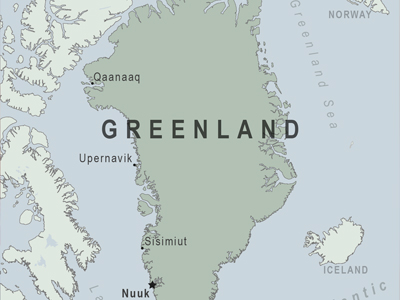Researchers from Denmark have put the results of their study on a site called Polar Portal. It has been said that after Wednesday (28 July 2021) the highest snow melted for the third time after 1950. Earlier this much snow had melted in the years 2012 and 2019. Although a lot of snow had melted in 2019 also, it could not store water in such a large area, as is estimated this time.
Scientists told that the amount of ice melted in Greenland will store 2 inches of water in the entire Florida province of America. Environmental scientist Xavier Fattwiss from the University of Lige in Belgium has estimated that 22 Gigatonnes of ice melted in Greenland on July 28. More than half of the 12 Gigatonnes of melted ice water went into the ocean. Apart from this, due to the heavy snowfall of over 10 Gigatons of melted ice, the water got frozen or absorbed. 1 Gigaton means 100 million metric tons.
Javier Fattvis said that such a situation has come due to atmospheric change. Because hot air is trapped over the arctic region. Because of this, the ice deposited below is melting rapidly. The Danish Meteorological Institute said that it is currently summer in Greenland. The temperature has gone above 20 ° C twice.
The temperature on Thursday i.e. 29 July 2021 was 23.4 degrees Celsius. Scientists fear that if this warm air stays longer over the Arctic region, then more ice may melt. Because there is no change in atmospheric change.
If the snow melts, the reflection of sunlight will decrease. That is, the heat will increase further. If it is too hot, the layers of ice will melt. Due to this the sea level can rise rapidly. According to scientists, the melting of Greenland’s ice has started since 1990.
Since 2000, the rate of melting of thick layers of ice in Greenland has accelerated. But in recent times, the ice is melting at a rate four times higher than in the year 2000. Greenland is the largest non-continental island in the world. Where there is always ice after Antarctica.
The second interesting thing is that the ice layer in Greenland is the second-largest source of clean water on Earth. The ice in Greenland and Antarctica holds 70 percent of the clean water present in the world. Scientists estimate that if all the ice in Greenland and Antarctica melts together, then the sea level will rise by about 23 feet. Due to this many countries of the world will be submerged in water. The names of some will be erased.

![Buddha Purnima 2025 [TKB INDIA]](https://topknowledgebox.com/iphaphoo/2025/05/12052025-150x150.jpg)
![YouTube is about to turn 20, the company announced many big features [TKB Tech]](https://topknowledgebox.com/iphaphoo/2025/04/28042025-150x150.jpg)
![Basant Panchami 2025: Know the correct date and auspicious time [TKB INDIA]](https://topknowledgebox.com/iphaphoo/2025/01/31012025-150x150.jpg)

![Amazing feature of WhatsApp, you will be able to reply without listening to the voice message[TKB Tech]](https://topknowledgebox.com/iphaphoo/2024/11/24112024-150x150.jpg)





More Stories
Buddha Purnima 2025 [TKB INDIA]
YouTube is about to turn 20, the company announced many big features [TKB Tech]
Basant Panchami 2025: Know the correct date and auspicious time [TKB INDIA]